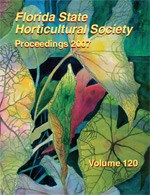Abstract
The first of the fastidious prokaryotic plant pathogens to be grown in axenic culture was the phloem-limited Spiroplasma citri, which causes stubborn disease of citrus. Other fastidious prokaryotic plant pathogens followed and include Spiroplasma kunkelii (corn stunt) and Spiroplasma phoeniceum (periwinkle yellows). The vast majority of spiroplasmas are associated with arthropods and do not cause plant diseases. The axenic culture of fastidious xylem-limited bacteria followed the work on these phloem-limited fastidious bacteria. The gram-negative bacterium causing Pierce's disease of grapevines and now known as a pathogenic variant of Xylella fastidiosa was the first isolated in culture in 1978. The gram-positive coryneform bacterium causing ratoon stunting disease of sugarcane, Clavibacter xyli subsp. xyli (Liefsonia xyli subsp. Xyli) was the second isolated in culture. Media formulations for culturing these bacteria have served as models for the development of other media for the culture of fastidious plant-associated microbes. Knowledge gained in such efforts may lead to the culture of the citrus greening bacterium. The importance of culturing the causal agent as a tool for the management of citrus greening is discussed.

